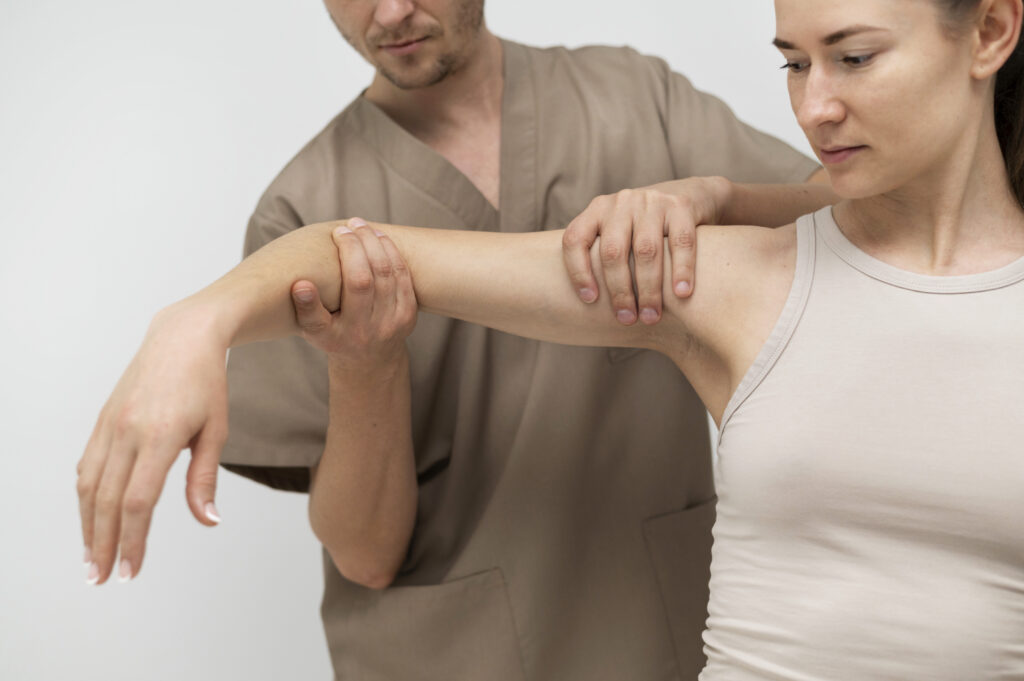If you're tired of relying on over-the-counter medications for headache relief, you might want to explore some natural alternatives. There are various methods that can help alleviate discomfort without the side effects of pharmaceuticals. From essential oils that soothe your senses to acupressure techniques that target tension, each approach has its own unique benefits. You'll also discover how staying hydrated and practicing mindfulness can play a vital role in prevention. Curious about which methods might work best for you? Let's uncover the most effective strategies to manage your headaches naturally.
Essential Oils for Relief
When you're battling a headache, essential oils can offer a natural and soothing relief. These concentrated plant extracts have been used for centuries, and their therapeutic properties can help ease your discomfort. Some of the most effective oils for headache relief include peppermint, lavender, and eucalyptus.
Peppermint oil is particularly popular for its invigorating scent and its ability to stimulate circulation. When you apply diluted peppermint oil to your temples or the back of your neck, you might feel a cooling sensation that can reduce tension and pain. Just a few drops mixed with a carrier oil can work wonders.
Lavender oil, on the other hand, is known for its calming properties. If stress or anxiety triggers your headaches, inhaling lavender oil or diffusing it in your space can create a relaxing atmosphere. Consider adding a few drops to a warm bath or using it in a compress for added relief.
Eucalyptus oil is another excellent choice, especially if your headache is accompanied by sinus pressure. Its decongestant properties can help open your airways, making it easier to breathe. You might want to add a few drops to a bowl of hot water and inhale the steam or use it in a diffuser.
To maximize the benefits, try combining these oils or using them in a roller bottle for easy application. Remember to always dilute essential oils with a carrier oil before applying them to your skin. This way, you can enjoy their natural healing effects safely and effectively.
Herbal Remedies
Herbal remedies offer a natural approach to alleviating headaches, tapping into the power of plants for relief. If you're looking for alternatives to over-the-counter medications, several herbs have gained popularity for their effectiveness in soothing headache pain.
One well-known option is peppermint, which contains menthol. Applying diluted peppermint oil to your temples can create a cooling sensation that relaxes tense muscles and improves blood circulation.
Another powerful herb is feverfew, traditionally used for migraines. You can take it in capsule form or as a tea, and it might help reduce the frequency and intensity of your headaches.
Ginger is another fantastic choice. Its anti-inflammatory properties can help alleviate headache symptoms, especially if your pain is related to nausea. You can enjoy ginger tea or chew on raw ginger root for relief.
Willow bark is often referred to as nature's aspirin due to its salicin content, which can help with pain relief. However, be cautious if you're allergic to aspirin.
Lastly, consider lavender. Inhaling lavender essential oil or drinking lavender tea can reduce headache severity and promote relaxation.
Before starting any herbal remedy, it's wise to consult with a healthcare professional, especially if you're on other medications. By incorporating these herbal remedies into your routine, you can find a natural path to headache relief that works for you.
Acupressure Techniques
Alongside herbal remedies, acupressure techniques can provide effective natural relief for headaches. This ancient practice involves applying pressure to specific points on your body, helping to alleviate pain and tension. You don't need any special equipment—just your fingers and a little focus.
Start by locating the "LI4" point, also known as Hegu, situated between your thumb and index finger. Gently squeeze this area for about 5 minutes, feeling for a tender spot. This technique can help relieve tension headaches and migraines.
Next, try the "GB20" point, located at the base of your skull, in the hollows on either side of your neck. Use your thumbs to apply firm pressure here for 5-10 minutes. This technique can help reduce pain caused by tension and neck strain.
Another effective point is the "Yintang" point, found between your eyebrows. Applying gentle pressure here for a few minutes can calm your mind and help ease stress-related headaches.
Always remember to breathe deeply as you apply pressure, allowing your body to relax. You might find it helpful to visualize the tension melting away with each exhale.
You can incorporate acupressure techniques into your routine whenever headaches strike. It's a simple, portable method you can use virtually anywhere. By learning these techniques, you empower yourself to address headaches naturally, promoting overall wellness and relief.
Hydration and Nutrition
Proper hydration and nutrition are essential for maintaining overall health and can greatly impact headache relief. When you're dehydrated, your brain can temporarily shrink from fluid loss, leading to painful headaches. To prevent this, aim to drink enough water throughout the day—generally about eight 8-ounce glasses, but adjust based on your activity level, climate, and personal needs.
If you notice signs of dehydration, such as dry mouth or fatigue, drink water immediately.
Nutrition plays a crucial role as well. Eating balanced meals helps keep your blood sugar stable, which can prevent headaches caused by hunger or low energy. Focus on whole foods like fruits, vegetables, lean proteins, and whole grains.
Foods rich in magnesium, such as spinach, nuts, and seeds, can help reduce headache frequency, while omega-3 fatty acids found in fish like salmon may also offer benefits.
You should also keep an eye on potential headache triggers in your diet. Some people find that caffeine, alcohol, or certain aged cheeses can spark headaches.
Keeping a food diary can help you identify any patterns between what you eat and headache occurrences.
Mindfulness and Relaxation
Finding calm in the chaos of daily life can be a game-changer for headache relief. When you incorporate mindfulness and relaxation techniques into your routine, you create a sanctuary for your mind and body. These practices can help decrease stress, which is often a primary trigger for headaches. By focusing on the present moment, you can break the cycle of tension and discomfort.
Start by dedicating just a few minutes each day to mindfulness exercises. You might find that even simple techniques can have a profound impact on your headache frequency and intensity. Here are a few methods to contemplate:
- Deep Breathing: Take slow, deep breaths, inhaling through your nose and exhaling through your mouth. This can help lower your heart rate and reduce tension in your body.
- Progressive Muscle Relaxation: Tense and then relax each muscle group in your body, starting from your toes and working your way up. This method releases built-up tension, easing headaches.
- Guided Meditation: Use apps or online resources to find guided meditations specifically designed for relaxation. These sessions can help clear your mind and reduce stress levels.
Incorporating these mindfulness techniques into your daily life can transform your headache management. You'll likely find that by nurturing your mental state, you're not only preventing headaches but also enhancing your overall well-being.
Make mindfulness a priority, and watch how it changes your relationship with headaches.
Conclusion
Incorporating these five natural headache relief methods into your routine can help you find the comfort you need. Whether you choose the soothing scents of essential oils, the healing properties of herbal remedies, or the power of acupressure, you're taking proactive steps toward relief. Don't forget the importance of staying hydrated and practicing mindfulness to keep headaches at bay. By embracing these techniques, you can enhance your overall well-being and enjoy a more headache-free life.



